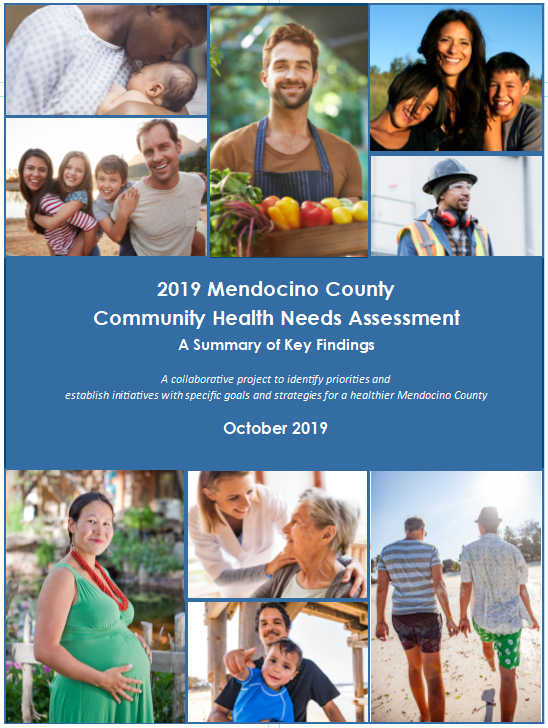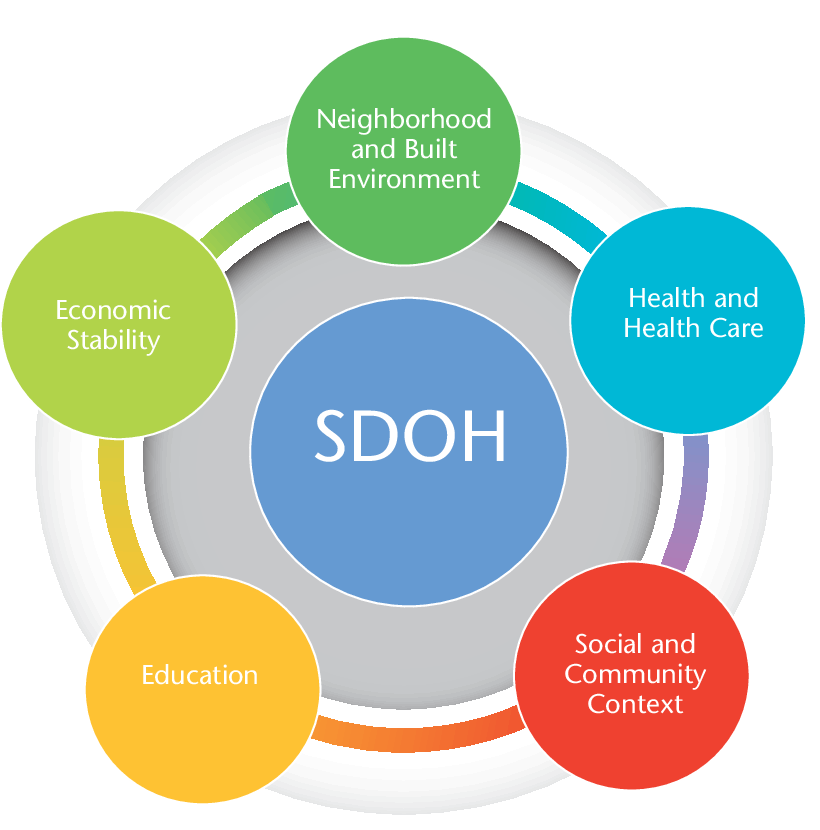The 2019 CHNA Priorities and Workforce Development
The 2019 Community Health Needs Assessment (CHNA) Planning Group extrapolated three health and quality-of-life priority areas from the community data compiled in the report: Mental Health, Domestic Abuse, and Substance Abuse. Healthy Mendocino then conducted more than 20 Listening Tours with diverse groups and sectors throughout the county to identify what organizations and individuals need to improve health and quality of life in their communities. Consistently, staff heard common themes throughout the listening tours:
- Recruitment and retention issues are of high importance
- Entry level applicants need soft skills
- Higher level applicants need training and educational opportunities
- In outlying areas, educational opportunities for career development, skills training and job opportunities are lacking
- Communities need well-paying jobs and economic freedom
It was stated that without good paying jobs people remained in poverty, had an increase in mental health issues, domestic abuse, and substance abuse. Agencies and organizations working on these issues have a hard time finding qualified applicants and most have positions that they can not fill. Looking at the social determinants of health, root causes, and upstream factors Healthy Mendocino choose to put together a Workforce Development Initiative for consideration.
Social Determinants of Health
Health begins in our homes, schools, workplaces and communities. The conditions where we live, work and play are just as significant as medical interventions in influencing a wide range of health, functioning and quality-of-life outcomes including mortality, morbidity, and life expectancy. Conditions in these various environments, whether social, economic, or physical, as well as access to resources and social and economic opportunity have a significant impact on the health of the community. These conditions, or Social Determinants of Health, are shaped by the distribution of money, power and resources at global, national and local levels. Healthy Mendocino seeks to help influence local policies and practices by shifting social norms in non-health sectors and inspiring multi-disciplinary collaboration in ways that promote health equity for all of Mendocino County. Employment and quality of work are factors that influence our health.
Work, Purpose and Health
Maintaining a sense of purpose and meaning in our lives is integral to health. Some find meaning and purpose through their religion, family or hobbies. But what about our jobs? We are spending more and more of our lives at work. According to Gettysburg College, the average American spends one third of her/his life at work, or 90,000 hours over her/his lifetime. Thus, our professional spheres should be another outlet for cultivating meaning and purpose in our lives.
Fostering purpose in our work builds a sense of resilience. Connection to a purpose greater than ourselves can help us stay focused and on track mentally and spiritually in the face of personal and professional setbacks. Having meaning in our lives also ignites hope for the future and optimism, which is then passed on to the people we work with or serve, improving overall community health.
While there are not many studies revealing the positive effects of economic opportunity on mental health, a 2016 Lancet study funded by The Robert Wood Johnson Foundation found that economic opportunity is independently associated with self-reported health, including mental health, and health behaviors. The study deduces that policies seeking to expand economic opportunities might have important spillover effects on health.
Mendocino County Workforce and Community Health
Mendocino County has a statistically low unemployment rate. However, 19.4% of households and 24.8% of our children are living below the poverty line and only 58.6% are living 200% at or above poverty level, suggesting an underemployment issue. Across all sectors, organizations and agencies have difficulty recruiting and retaining employees in key positions. Nurses, physicians, therapists, police officers and credentialed teachers are just a few examples of these positions. It is difficult to fill these professional positions using our local workforce, as only 24.7% of the county population has a bachelor's degree or higher, with only 7.57% holding post-baccalaureate or professional degrees. The impact to community health of these positions remaining unfilled is direct and cumulative. Our access to care and mental health services are impacted, continuity is lost, and it is difficult to maintain and build organizational and systems capacity.
Workforce Development Initiative: Promoting Pathways for Progress
Incorporating the 2019 CHNA priority areas, national best practices and lessons learned from the 2016-2019 CHIP work, Healthy Mendocino formed Promoting Pathways for Progress, an upstream initiative that would help move the dial towards substantial change in the 2019 CHNA priority areas of Mental Health, Domestic Abuse, and Substance Abuse. This is a community document intended to inspire cross-sector collaboration around the issue of workforce development.
Promoting Pathways for Progress is aimed at building hope for a brighter and more prosperous tomorrow for some of our Mendocino County communities struggling with underemployment and for our youth who might not have exposure to a range of work possibilities. It is also an effort to support the development of our workforce to fill the needs of our agencies and businesses that work to improve community health. The initiative has an emphasis on outlying communities with a greater lack of access to opportunity. Click HERE to view the initiative goals, strategies and updates.
Related News
"Not all high school students are aware there are many different types of colleges they can consider," said Mikyung Ryu, director of research publications at National Student Clearinghouse. "There are public four-year colleges, community colleges, trade school."
Anything other than a four-year program can be treated as a lesser option. Ryu said research shows that for certain fields, a person with an associate's degree can out-earn their peers with bachelor's degrees. For example, workers with associate's degrees in chemical technology have median earnings of about $75,500, compared to their peers with bachelor's degrees with a median earnings of about $50,600. She said it's the lack of information that puts students at a disadvantage.
"Particularly what concerns the research community in terms of lack of access to information is the students who are historically, traditionally underserved," she said.
Read moreA wonderful New York Times article from 2007 recounted the 20th annual “Operator’s Challenge” — aka the “Sludge Olympics” — a competition for New York sewage treatment workers. The participants compete to show skill in their work, and often do so with great passion. Emily Lloyd, the commissioner of the New York City Department of Environmental Protection, said of the work the competitors do, “It’s tough work. It’s frequently unpleasant work. And they’re terrific at it.” And as you read the article, you note the pride the competitors have in their work and the purpose they find in doing it well. One man, George Mossos, noting how anonymous their work can be, is quoted saying, “It’s enough to serve the public.”
Why is it that some people can be extraordinarily well-paid and work in pampered settings but feel empty, while others can work in the sewers of New York City and feel fulfilled? Part of the answer is purpose.








